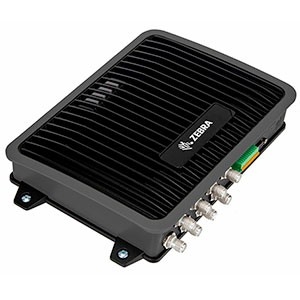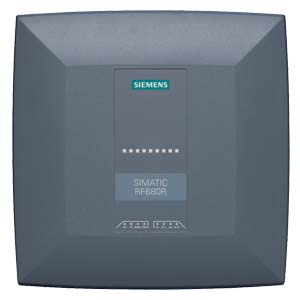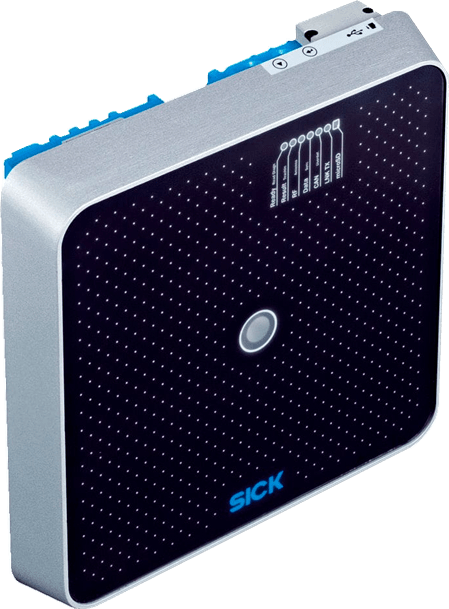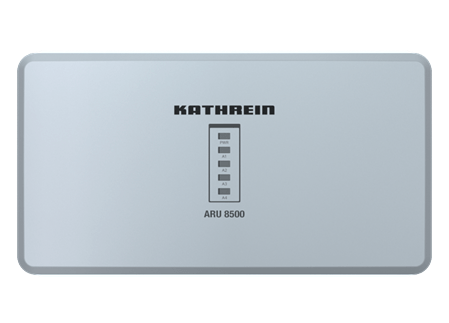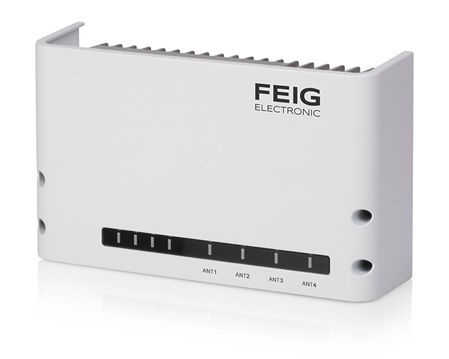What is an RFID reader?
RFID is an abbreviation that comes from English and stands for "Radio Frequency Identification Reader". Behind the term is a card reader for RFID applications. The RFID reader is able to read and store data. This innovative technology expands the concept of barcodes, as it is no longer necessary to have direct visual contact or physical proximity to the product. Thus, objects and living beings can be automatically identified and located with the help of RFID readers. It is also no problem for an RFID reader/writer to analyse multiple objects - bulk detection is possible.
Since RFID readers involve fully automatic communication between an RFID transponder and an RFID reader, this is also referred to as Auto-ID (Automatic Identification and Data Capture). The technology now functions as a key element in commerce and logistics and it is impossible to imagine the everyday working life of many companies without it:
- production
- customer and payment cards
- automotive industry
- trade
- healthcare
- logistics
- libraries
- domestic and farm animals
- events
How does an RFID reader work?
The Radio Frequency Identification Reader is a receiver that interacts with RFID transponders. The integrated RFID antenna emits a signal that is absorbed by the transponder - also called a tag. The tag processes the data, which can be information about workpieces, orders or materials, for example. Afterwards, this data is transferred back to the RFID reader and evaluated. This means that RFID readers are mainly concerned with generating commands, filtering the adapted signal and analysing the data.
Last but not least, the processed information has to be transferred to a host system. The results are checked and stored. Normally, these are warehouse management, ERP, merchandise management or production planning systems.
Advantages of RFID technology
RFID technology is the pivot and anchor point of countless work processes in industry and commerce. Through the use of RFID transponders and RFID readers, a comprehensive automation of the economy has taken place in recent decades. Productivity has been continuously increased and efficiency improvements have been steadily increasing. This is due to the fact that the use has become incredibly simplified.
RFID readers require no visual contact or touch point compared to barcodes or other automated identification methods. Data exchange is fully automated and wireless. Even large distances can be bridged effortlessly through the smart communication of the RFID transponder with the RFID reader. In addition, the RFID chip, reader and label are resistant to dirt, moisture and high temperature fluctuations. And while barcodes become almost unreadable in poor lighting conditions, data capture and transmission via RFID works flawlessly.
Furthermore, the applications can be easily customised. Both the size, the range, the shape and the storage medium can be personalised and adapted to one's own needs and requirements. Despite versatile designs, the radio waves of RFID solutions are able to penetrate various materials. Wood, plastic, cardboard and textiles are no obstacle for the technology; the products' information can be read flawlessly.
Moreover, the data can be revised and aligned. It is also worth mentioning that the sensitive information is protected against manipulation and theft. After all, they are not reproduced in plain text: they are encrypted.
A final point is the time and cost savings that companies experience through the use of RFID applications. Pulse capture enables the data readout and transfer of multiple products. The first-read rate is almost 100 per cent and the RFID solutions also make use of fast inspection processes.
Different types of RFID readers
Over the years, different RFID readers have emerged. The classification depends on various factors. These include:
- frequency range
- Power supply
- Reading range
- Use case
- Mobility
- Place of use
Mobile RFID readers
Mobile RFID readers are called handheld RFID readers. This name already gives relevant clues to the design and characteristics of this model. This type of reader is not stationary, but mobile. The readers do not need a permanent power supply because the information is temporarily stored and transferred to a host system. Data is transferred via WLAN or by connecting to the docking station.
The handy devices are particularly useful in the warehouse to carry out a periodic inventory. They are used for inventory management and item search and can help control import, export and shrinkage. Other areas of application include omni-channel order processing and picking.
Stationary RFID readers
Stationary RFID readers or RFID gate readers rely on a gate. When products pass through this gate, the reader detects the RFID transponder. Communication is also ensured by opposing pairs of antennas. Such an application is primarily profitable for companies that want automated identification of objects. A stationary RFID reader is also particularly advantageous for bulk scanning. Even when scanning several items, an error-free reading of the tagged objects is possible.
This variant is mainly used by the manufacturing industry, transport and logistics companies. Furthermore, such an application is also profitable for libraries and retail. This way, theft can be counteracted and the inventory can be checked. At events, the technology is used to measure time and identify visitors.
Semi-stationary RFID readers
A mixture of mobile and stationary RFID readers are the semi-stationary readers, also called desktop readers. They are inexpensive and include all current RFID technologies. They can be connected to the computer using a USB port or a COM interface.
The semi-stationary reader covers the following areas of application:
- point of Sale
- intelligent shelves
- displays
- software protection
- online banking
- transponder Programming Station
- document localisation
- issue points
- inventory management
- theft protection
- telecommunications
- reception
The smartphone as a reader
In the meantime, more and more smartphones and tablets are coming onto the market that have NFC compatibility. These devices are not only able to use the internet, but can also communicate with other devices using the network connection. This makes mobile payment and smart home possible. If objects have now been equipped with an NFC transponder, the smartphone can read out the data. The only prerequisite is that the NFC functionality is activated and contact is made with the chip.
What to look for when buying an RFID reader
Since there is now a wide range of RFID readers on the market, some quality criteria should be used to choose the right reader:
- system frequency
- performance/range
- resistance
- coupling possibilities with EDP systems
- compatibility with other RFID transponders
Different frequency ranges
Radio waves act as a transport system for the information to be transmitted. RFID readers use different frequency ranges:
- low frequency range (LF): 125 KHz
- high frequency range (HF): 13.56 MHz
- ultra high frequency range (UHF): 860 to 960 MHz
Zebra FX9600
To achieve maximum visibility and efficiency in your most rugged environments, your operation needs an RFID reader that can keep up with the high volume and wide variety of pallets, cases and tagged items that go in, out and through your warehouse and dock doors each day.
Now, get the performance and features you need to handle it all with the FX9600 — without breaking the bank. With industry-leading read rates, exceptional read accuracy and superior RF sensitivity, the FX9600 has what it takes to automate nearly every aspect of your inventory management — from receiving and putaway to picking and shipping — without errors or bottlenecks. The FX9600 is the industry-best performance your operation needs at a price you can afford.
Siemens RF680R
The high-performance SIMATIC RF680R reader has four antenna connections that can be configured as required for individual read stations, or as gates. The high radiant power of up to 2 W ERP / 4 W EIRP (dependent on antenna and cable) permits long ranges of up to 8 m in portal applications. The integrated processing logic of the reader enables numerous functions of the higher-level software layers to be executed in the device itself. If necessary, the digital outputs for signaling functions are automatically controlled. The advantage of the SIMATIC RF680R is that its intelligence considerably reduces the cost for additional software modules (RFID middleware).
SICK RFU630
The RFU63x is an ultra-high frequency (UHF) RFID solution for industrial environments. Via integrated application management software, the RFU63x is able to solve common industrial applications without any external "middleware" and can, therefore, be used as a stand-alone solution. This is possible due to an integrated filter and data management system. With 4Dpro compatibility, the RFU63x is easy and cost-efficient to integrate in common industrial environments. Different options for parameter cloning between systems (e.g., integrated microSD memory card feature) reduce maintenance time. The integrated feedback LED can be used to read diagnostic or process feedback.Kathrein ARU 8500
The Kathrein Reader ARU 8500 is the perfect device for identification and direction detection. Based on an Ethernet communication interface and a circular switch-beam antenna, the reader detects tge direction of movement of goods and containers. It is possible to read out active and passive RFID tags in the frequency range from 865 to 868 MHz (865 to 867 MHz for India) and from 902 to 928 MHz (916 to 928 MHz for Peru). The device can read and write tags conforming to the EPC Gen2v2 standard (ISO 18000-6C).FEIG ID ISC.LRU1002
The UHF Long Range Reader ID ISC.LRU1002 is a high performance Long Range Reader that can be used in different kind of applications. The reader convinces with an excellent price performance ratio and is characterized by the following features:Didn't find your product?
We deliver thousands of items and only show case a few selected products for given categories.
We are happy to help you find your specific product and can create you a quotation.


